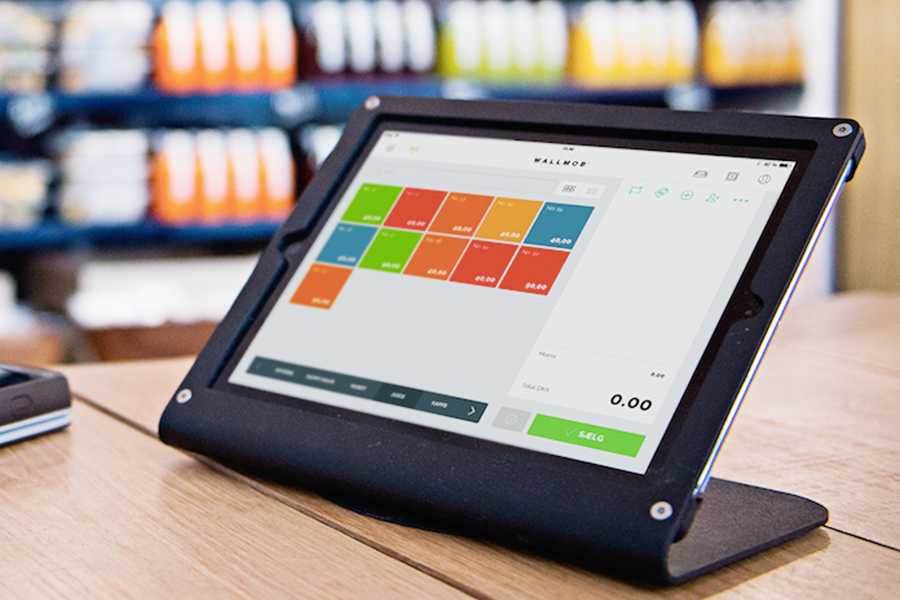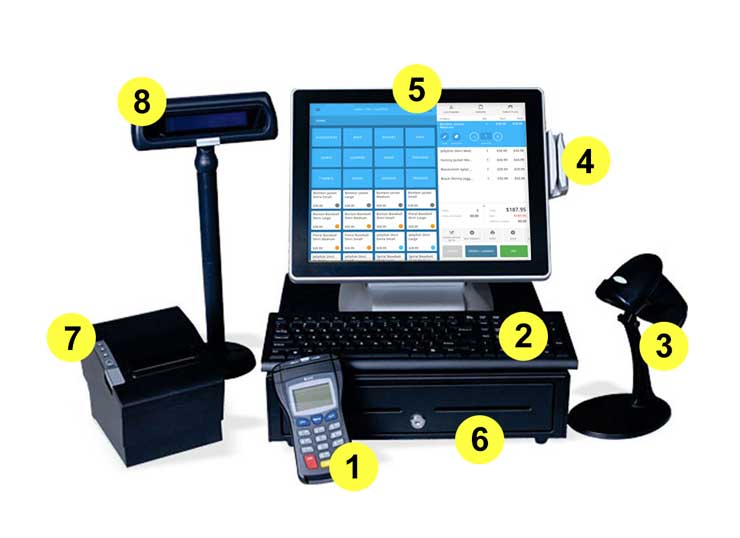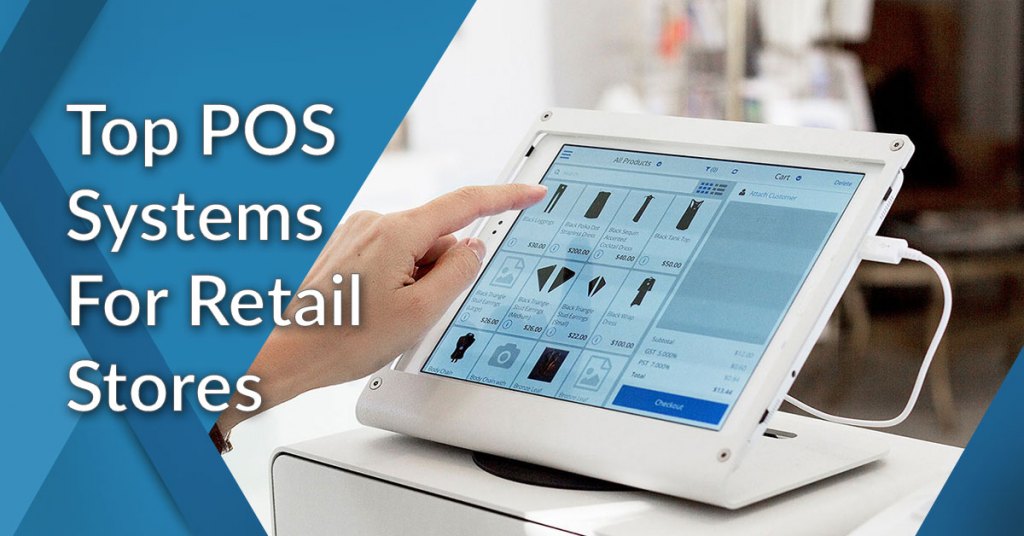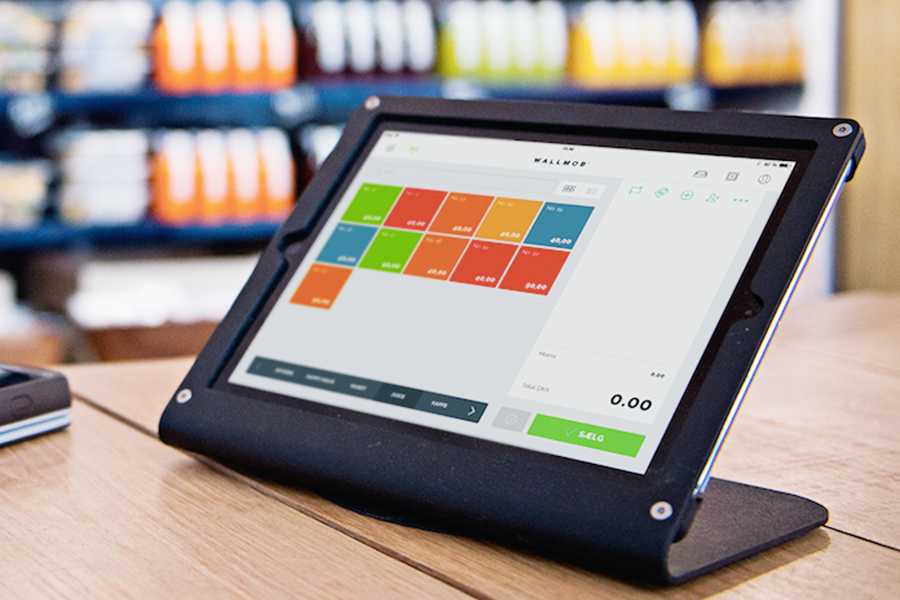
In “The Ultimate Guide to Retail Point of Sale Systems for Boosting Sales and Streamlining Operations,” you will discover the key to increasing your sales and making your business operations run smoothly. This comprehensive guide explores the world of retail point of sale systems, revealing their hidden potential for transforming your store. From enhancing customer experiences to improving inventory management, this article provides the insights and knowledge you need to take your retail business to new heights. Learn how Detroit Retail Merchants have harnessed the power of these systems and uncover the easiest way to boost your sales and streamline operations.

Chapter 1: Understanding Retail Point of Sale Systems
What is a retail point of sale system?
A retail point of sale system, often referred to as a POS system, is a software and hardware solution that enables businesses to manage sales, track inventory, and process transactions at the point of sale. It serves as the central hub for all retail operations, allowing businesses to streamline their processes and provide a more efficient and pleasant experience for both customers and employees.
At its core, a retail POS system consists of a cash register or computer, a barcode scanner, a receipt printer, and a touchscreen or keyboard interface. It can also include additional components such as credit card machines, customer displays, and weighing scales. These components work together seamlessly to facilitate transactions, generate sales reports, manage inventory, and perform other essential functions for a retail business.
Benefits of using a retail point of sale system
Implementing a retail point of sale system offers numerous benefits for businesses of all sizes. Here are some of the key advantages you can expect to experience:
-
Streamlined Operations: A retail POS system automates various tasks such as inventory management, sales reporting, and employee scheduling, reducing manual effort and saving time. This streamlined approach allows businesses to focus on providing excellent customer service and improving overall operational efficiency.
-
Enhanced Efficiency: With a retail POS system, employees can quickly and accurately process transactions, reducing waiting times and improving the overall customer experience. Real-time inventory tracking and automated reordering capabilities also ensure that businesses never run out of stock, reducing lost sales due to inventory shortages.
-
Improved Reporting and Analytics: By capturing and analyzing sales data, a retail POS system provides valuable insights into customer buying patterns, popular products, and other key metrics. This information can then be used to optimize pricing strategies, make informed inventory purchasing decisions, and identify opportunities for growth.
-
Enhanced Customer Experience: A retail POS system enables businesses to personalize the customer experience by storing customer information and purchase history. This allows for targeted marketing campaigns, tailored promotions, and personalized recommendations, ultimately fostering customer loyalty and increasing sales.
-
Increased Security: Retail POS systems employ robust security measures to protect sensitive customer data, such as credit card information. They also help prevent employee theft and fraud through features like user permissions and transaction auditing. This increased security provides peace of mind for both businesses and their customers.
Key features to look for in a retail point of sale system
When choosing a retail POS system, it’s essential to consider the key features it offers. Here are some features to look for:
-
Inventory Management: An effective retail POS system should have robust inventory management capabilities, including real-time stock tracking, automated reordering, and product categorization.
-
Sales Reporting and Analytics: Look for a system that provides comprehensive sales reports and analytics, allowing you to monitor performance, track trends, and make data-driven decisions.
-
Customer Relationship Management (CRM): CRM functionality enables businesses to track customer information, purchase history, and more. This allows for personalized marketing campaigns and better customer service.
-
Employee Management: A retail POS system should have features like employee scheduling, time clock integration, and user permissions to streamline workforce management and improve accountability.
-
Loyalty Programs and Gift Cards: Integration with loyalty programs and gift card systems allows businesses to incentivize customer loyalty and attract new customers.
-
Integration with E-commerce Platforms: If you have an online store or plan to expand to e-commerce, look for a retail POS system that seamlessly integrates with popular e-commerce platforms for inventory synchronization and centralized management.
By considering these features and ensuring they align with your business needs, you can choose a retail POS system that will become an invaluable asset for your operations.
Chapter 2: Types of Retail Point of Sale Systems
1. Traditional Cash Registers
Traditional cash registers are the most basic type of retail point of sale system. They typically consist of a cash drawer, a calculator-like display for manually entering the sale amount, and a receipt printer. While traditional cash registers are simple and affordable, they lack the advanced features and capabilities offered by modern POS systems.
2. Terminal-Based Point of Sale Systems
Terminal-based point of sale systems, also known as on-premise systems, involve a dedicated computer terminal with specialized POS software installed. This type of system offers more advanced features than traditional cash registers and can be customized to suit specific business needs. Terminal-based systems are best suited for businesses that require robust inventory management and advanced reporting capabilities.
3. Mobile Point of Sale Systems
Mobile point of sale systems leverage smartphones or tablets as the primary point of sale device. These systems provide businesses with flexibility by allowing transactions to be processed anytime, anywhere. Mobile POS systems are particularly popular in industries like food trucks, pop-up shops, and events, where portability and ease of setup are essential.
4. Cloud-Based Point of Sale Systems
Cloud-based point of sale systems, also known as web-based or software-as-a-service (SaaS) systems, store data and run applications on remote servers accessed via the internet. This eliminates the need for on-site servers and allows businesses to access their POS system from any device with an internet connection. Cloud-based POS systems offer scalability, flexibility, and regular software updates, making them ideal for businesses that require a modern and agile solution.
5. Self-Service Point of Sale Systems
Self-service point of sale systems empower customers to complete their transactions independently, without the assistance of a cashier. These systems are commonly found in industries like fast food restaurants, supermarkets, and gas stations. Self-service POS systems can speed up the checkout process and improve customer satisfaction by reducing wait times.
By understanding the different types of retail point of sale systems available, businesses can choose the one that best suits their unique requirements and aligns with their operational goals.
Chapter 3: Factors to Consider When Choosing a Retail Point of Sale System
1. Scalability and Growth
When selecting a retail POS system, it’s crucial to consider your business’s current size and future growth plans. Ensure that the system you choose can accommodate growth in terms of inventory volume, number of users, and sales volume without sacrificing performance or requiring a costly upgrade.
2. Integration with Other Business Tools
Evaluate the integration capabilities of a retail POS system to ensure it can seamlessly connect with other essential business tools such as accounting software, e-commerce platforms, and customer relationship management (CRM) systems. Integration enables data synchronization and centralizes business operations, allowing for better decision-making and streamlined processes.
3. User-Friendliness
A user-friendly interface is essential for the successful adoption and efficient use of a retail POS system by your staff. Look for a system that offers intuitive navigation, easy-to-understand features, and customizable workflows. Training requirements should also be minimized to ensure swift onboarding of new employees.
4. Cost and ROI
Consider the upfront costs, ongoing fees, and potential return on investment (ROI) when choosing a retail POS system. Compare pricing plans, hardware requirements, and any additional costs for software updates, customer support, or integration services. Remember that the value gained from a reliable and feature-rich POS system often justifies the initial investment.
5. Customer Support and Service
Prompt and reliable customer support is crucial in case of technical issues or questions about system functionality. Look for a POS system provider that offers 24/7 customer support and has a reputation for providing excellent service. Check customer reviews and testimonials to gauge the level of satisfaction among existing users.
6. Security and Compliance
Ensure that the retail POS system you choose meets industry standards for data security and compliance, particularly if you handle sensitive customer information like credit card details. Look for features like data encryption, user authentication, and compliance with Payment Card Industry Data Security Standards (PCI DSS) to protect customer data and reduce the risk of fraud.
By carefully considering these factors, you can select a retail POS system that aligns with your business needs, enhances efficiency, and sets the foundation for future growth.
Chapter 4: Essential Features of an Effective Retail Point of Sale System
1. Inventory Management
Inventory management is a critical feature of any retail POS system. It allows businesses to track stock levels, automate reordering, and manage product variations and attributes. Look for a system that provides real-time inventory tracking, stock alerts, and the ability to set reorder points to avoid stockouts and overstocking.
2. Sales Reporting and Analytics
Comprehensive sales reporting and analytics features enable businesses to track sales performance, identify trends, and make data-driven decisions. Look for a retail POS system that offers customizable and easy-to-understand reports, visualizations, and the ability to track sales by product, employee, or time period.
3. Customer Relationship Management (CRM)
CRM functionality allows businesses to store and manage customer information, enabling personalized marketing campaigns, loyalty programs, and better customer service. Look for a POS system that integrates with a CRM platform or offers built-in CRM capabilities like customer profiles, purchase history tracking, and email marketing integration.
4. Employee Management
An effective retail POS system should have features to streamline employee management, such as employee scheduling, time clock integration, and user permissions. These features help businesses optimize staffing levels, track employee hours, and improve accountability.
5. Loyalty Programs and Gift Cards
Loyalty programs and gift cards can be powerful tools for increasing customer retention and attracting new customers. Look for a retail POS system that supports loyalty programs, allows for easy creation and redemption of gift cards, and integrates with popular loyalty program providers.
6. Integration with E-commerce Platforms
If you have an online store or plan to expand to e-commerce, seek a retail POS system that seamlessly integrates with popular e-commerce platforms. This integration ensures that inventory quantities and prices are synchronized across online and offline channels, preventing overselling or discrepancies in product availability.
By choosing a retail POS system with these essential features, businesses can effectively manage their inventory, optimize sales performance, build customer relationships, and streamline their operations.

Chapter 5: Steps to Implement a Retail Point of Sale System
1. Assess Your Business Needs
Before implementing a retail POS system, assess your business needs and goals. Consider factors such as sales volume, inventory size, customer expectations, and growth projections. This evaluation will help you determine the necessary features and capabilities required from a POS system.
2. Research and Evaluate Options
Research different retail POS systems and evaluate their features, pricing, customer reviews, and industry reputation. Create a shortlist of systems that align with your business needs and conduct in-depth demos or trials to assess their usability and functionality.
3. Choose the Right Vendor
Select a reputable vendor that can provide the chosen POS system and the necessary hardware or software components. Evaluate the vendor’s track record, customer support services, training resources, and any additional services they offer, such as system customization or integration support.
4. Prepare for Implementation
Plan the implementation process by setting a timeline, allocating resources, and communicating the upcoming changes to your employees. Create a data migration plan if you are transitioning from an existing system and ensure that all necessary data is backed up.
5. Train Your Staff
Provide comprehensive training to your employees on how to use the new retail POS system effectively. Offer hands-on training sessions, user manuals, and access to customer support resources. Regularly communicate system updates and organize refresher training sessions to ensure ongoing competence.
6. Monitor and Evaluate Performance
Once the retail POS system is implemented, closely monitor its performance and gather feedback from employees and customers. Identify areas for improvement, and periodically assess the system against your original business needs and goals. Regularly update the system with software updates and patches to ensure optimal performance and security.
By following these steps, businesses can smoothly implement a retail POS system, ensuring a seamless transition and maximizing the system’s benefits.
Chapter 6: Best Practices for Maximizing the Benefits of a Retail Point of Sale System
1. Keep Your System Updated
Regularly update your retail POS system with the latest software releases and security patches. These updates often include bug fixes, performance enhancements, and new features that can improve system stability and functionality.
2. Optimize Checkout Process
Ensure that your checkout process is efficient and customer-friendly. Minimize the number of steps required to complete a transaction and provide multiple payment options, such as contactless payments and mobile wallets, to accommodate different customer preferences.
3. Leverage Sales Data to Make Informed Decisions
Regularly analyze your sales data to identify trends, popular products, and customer preferences. Utilize this information to refine your marketing strategies, adjust pricing, and make informed decisions about inventory management and product selection.
4. Offer Personalized Customer Experiences
Utilize the customer relationship management capabilities of your retail POS system to offer personalized experiences. Use customer data to customize promotions, offer targeted discounts, and provide personalized recommendations based on each customer’s preferences and purchase history.
5. Utilize Integration Features
Explore and leverage the integration features of your retail POS system, particularly if it integrates with other business tools like e-commerce platforms, CRM systems, or accounting software. Integration allows for streamlined operations, accurate data synchronization, and centralized management.
6. Invest in Ongoing Staff Training
Continuously invest in staff training to ensure that employees are proficient in using the retail POS system to its full potential. Offer regular training sessions, implement a train-the-trainer approach, and provide resources such as user manuals and online tutorials.
By implementing these best practices, businesses can maximize the benefits of their retail POS system, improve operational efficiency, and deliver exceptional customer experiences.

Chapter 7: Common Challenges with Retail Point of Sale Systems and How to Overcome Them
1. System Downtime and Technical Issues
System downtime and technical issues can disrupt business operations and impact customer service. To mitigate these challenges, choose a retail POS system with robust technical support, regular software updates, and hardware redundancy options. Implement backup and disaster recovery protocols to minimize downtime.
2. Data Security and Fraud
Protecting customer data and preventing fraud is a top priority for retailers. Implement security measures such as data encryption, user authentication, and regular security audits. Educate and train employees on best practices for data security and fraud prevention to minimize risks.
3. Integration Problems
Integration issues can arise when connecting the retail POS system with other business tools like inventory management systems or e-commerce platforms. Choose a POS system with a proven track record of successful integrations or work closely with your vendor’s integration team to ensure a smooth implementation.
4. Employee Resistance to Change
Some employees may resist the transition to a new retail POS system due to concerns about their ability to adapt or changes in their workflow. Address these concerns through comprehensive training, clear communication about the benefits of the new system, and involvement of employees in the decision-making process.
5. Lack of Support from Vendor
Choose a retail POS system vendor that offers reliable and prompt customer support. Prioritize vendors with a reputation for excellent service and availability of support resources like phone, email, or live chat. Consider customer reviews and testimonials to gauge the level of support provided by the vendor.
6. Inadequate Ongoing Maintenance
Proper ongoing maintenance is essential to keep your retail POS system running smoothly. Establish a maintenance schedule for software updates, security patches, and hardware maintenance. Regularly monitor system performance and address any issues promptly to prevent potential disruptions.
By proactively addressing these common challenges, retailers can ensure the smooth operation of their retail POS systems and minimize any negative impacts on their business.
Chapter 8: Case Studies: Success Stories of Retailers Using Point of Sale Systems
1. ABC Retail: Boosting Sales with Real-Time Inventory Management
ABC Retail implemented a cloud-based POS system with real-time inventory management capabilities. By accurately tracking stock levels and automating reordering, they were able to reduce out-of-stock scenarios and boost sales. The system also provided valuable sales analytics, allowing them to identify trends and optimize pricing strategies.
2. XYZ Boutique: Enhancing Customer Loyalty with a CRM-Integrated System
XYZ Boutique integrated a CRM system with their retail POS system, allowing them to offer personalized experiences to their customers. By leveraging customer purchase history and preferences, they implemented targeted marketing campaigns, loyalty programs, and personalized recommendations. This led to increased customer loyalty and higher sales.
3. QRS Supermarket: Streamlining Operations with a Cloud-Based POS Solution
QRS Supermarket implemented a cloud-based POS system, enabling them to streamline their operations across multiple locations. The system provided centralized inventory management and real-time sales reporting, allowing for efficient stock management and optimizing replenishment processes. This resulted in improved operational efficiency and reduced costs.
These case studies demonstrate the tangible benefits that retailers have achieved by implementing retail POS systems tailored to their unique needs and goals.

Chapter 9: Future Trends and Innovations in Retail Point of Sale Systems
1. Artificial Intelligence and Machine Learning
Artificial intelligence and machine learning technologies are increasingly being integrated into retail POS systems. These technologies can automate tasks like inventory forecasting, personalized marketing, and customer support, enhancing operational efficiency and improving customer experiences.
2. Blockchain Technology
Blockchain technology has the potential to revolutionize the retail industry by providing secure and transparent transactions. Retail POS systems leveraging blockchain can enhance data security, enable faster and more efficient payment processing, and simplify supply chain management.
3. Contactless Payments and Mobile Wallets
Contactless payments and mobile wallets are gaining popularity, driven by the increased adoption of mobile devices and the need for fast and hygienic payment options. Retail POS systems should support various contactless payment methods to meet customer preferences and ensure a seamless checkout experience.
4. Augmented Reality in Retail
Augmented reality (AR) technology is transforming the retail industry by allowing customers to visualize products virtually before making a purchase. Retail POS systems with AR capabilities enable businesses to offer immersive product experiences, attracting and engaging customers in new and exciting ways.
5. Voice Assistants and Conversational Commerce
With the rise of smart speakers and voice-activated assistants, voice commerce is becoming a prominent trend. Retail POS systems that integrate with voice assistants allow customers to place orders, make inquiries, and complete transactions using voice commands, providing convenience and improving accessibility.
As the retail landscape continues to evolve, retail POS systems will adapt to incorporate these future trends and innovations, empowering businesses to stay competitive and meet evolving customer expectations.
Chapter 10: Final Thoughts and Key Takeaways
In conclusion, implementing a retail point of sale system is an essential step for businesses looking to boost sales and streamline operations. By understanding the different types of POS systems available, considering key factors in the selection process, and maximizing the system’s features, businesses can unlock numerous benefits, including improved efficiency, enhanced customer experiences, and data-driven decision-making.
To ensure successful implementation, businesses should carefully evaluate their needs, choose the right vendor, and provide comprehensive training to their staff. Ongoing maintenance, proactive problem-solving, and staying up-to-date with emerging trends and innovations are also essential for long-term success.
Embracing technology and leveraging retail POS systems will position businesses for future success, enabling them to adapt to ever-evolving consumer demands and drive growth in the competitive retail industry.





Leave a Reply